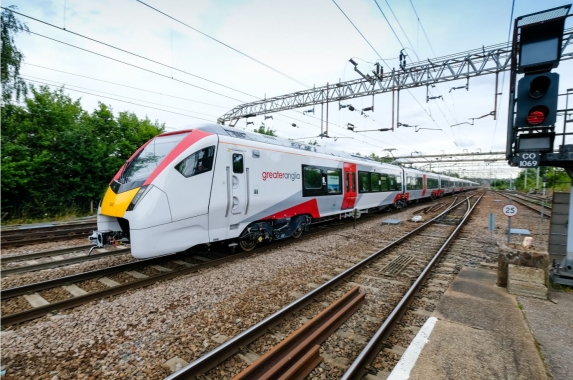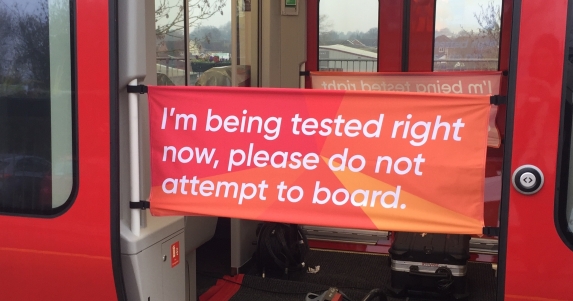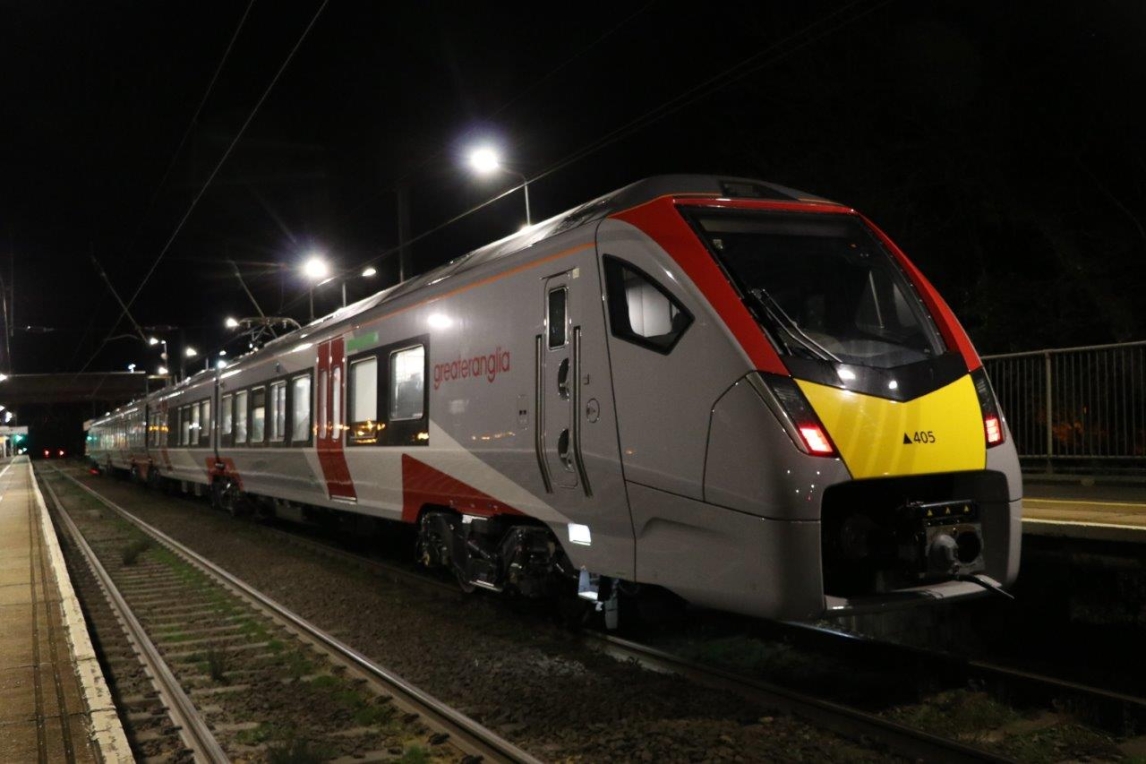Published on: Wednesday, 25 September 2019
Last updated: Friday, 18 October 2019
Our new trains are here. They’re in passenger service on routes from Norwich to Great Yarmouth, Lowestoft and Cambridge and carrying out test runs on other parts of the network. You’re probably seeing them out and about and wondering why they’re not on your route as well – especially as we’ve been talking about these new trains for three years now.
The good news is new trains are coming to your route.
We’re replacing every single train on our network with brand new trains, which will all be longer, with more seats, plug and USB sockets, air conditioning, fast free wifi, improved passenger information screens and better accessibility features. But did you know that trains are hand-made? Back in October 2016, when we started our nine-year franchise, we immediately put in orders for 169 new trains – 58 from Stadler, in Switzerland, and 111 from Bombardier, in Derby, 1,043 carriages in total. Manufacturing trains is very different to making cars, where in the most efficient factories up to 115 cars an hour roll off robot-operated production lines. Trains are not produced in such high volumes. At Stadler and Bombardier, people are crucial to assembling and building brand new trains. Although robots are used for some elements of production, the parts are still bolted together by humans. It takes about three months to assemble a train.
A car leaves a factory and you can drive it straightaway, so why isn’t it the same for trains?
Before our new trains go into passenger service, they have to undergo a series of safety and performance tests – plus our train drivers need to take the trains out for test drives, and other staff including conductors and catering staff also need to familiarise themselves with them.
We have to test the train’s equipment, such as the pantograph (which connects the train to the overhead wire to get power), passenger information system, doors and numerous other on-board systems. We’re looking for any faults that develop after the trains have put some miles on the clock as we want to make sure that when they come into service they’re as reliable as possible.
Many tests take place in the factory, including testing brakes, pantographs, noise levels, emissions, operational safety, and automatic train protection systems. We need to test them further to check how they perform when they are moving, running at speed and in all weather, so we can spot and resolve any teething problems.
We’ve got to test every single train, but not to the same extent. On the first few trains that are built we undertake detailed “type” testing to prove the functionality and performance of the trains. We also have to get certification from the Office of Rail and Road to be able to use them in passenger service. The testing that is performed on every single train is called “routine” testing, which ensures they are built to the same high standard and match the same functionality and performance measures as those recorded during type testing. They also have to rack up between 600 and 5,000 miles of “fault free running” to make sure that each train is reliable and meets our high standards. Only after the train has passed all of the tests with flying colours is it allowed to enter into passenger service.
We carry out “route proving” tests, to check trains’ performance and functionality at every station along each route. We have used “immersive media” to check what work we needed to do to every station on the network to accommodate the new trains, but we still have to take the trains out to each station to double check everything is as we planned. All of these tests have to be fitted in around our existing passenger services and Network Rail maintenance and upgrade work – which is why many of the tests are conducted at night.
How long does the testing take place?
Type testing can take a few months to ensure all systems are tested to prove they function as required. Each trains’ routine testing takes a few days. For the first few trains in the fleet, route proving is undertaken on a route-by-route basis to ensure our trains interface properly with our platforms and associated equipment. We can only do it at night, when we can keep trains in the stations for long enough to do all the checks without causing a delay to our passenger services. Therefore each week we can only test one route in detail and this also needs to be planned around other Network Railway maintenance work.
As soon as that is achieved, and Greater Anglia is happy with the result, the train is ready for passengers.
So when are the new trains coming to my route?
We’re taking delivery of our new trains as they are completed. We now have over 40 in East Anglia, but the majority of those are still in the test phase. Many more are in the final stage of production. As each week goes past, we will introduce more new trains onto the network. The bi-mode trains which are replacing our diesel trains on our regional routes should be in place by the New Year. We will also start to put our new intercity trains into passenger service this year. We’re hoping to get the first Bombardier train here for network testing by the end of this year and we’re planning for all new trains to be in service by the end of 2020.
What happens to the old trains?
We have to remove all of our branding, stickers and posters off our old trains and return them to the leasing company in the state we received them – although some of the improvements we made to them, such as the ABS-type braking system we installed to make them more reliable in autumn, can stay. We have no say in where they go next, although we know some of our old diesel trains are destined for Wales and some of our electric trains could be converted into hydrogen-powered trains.





